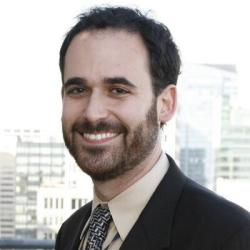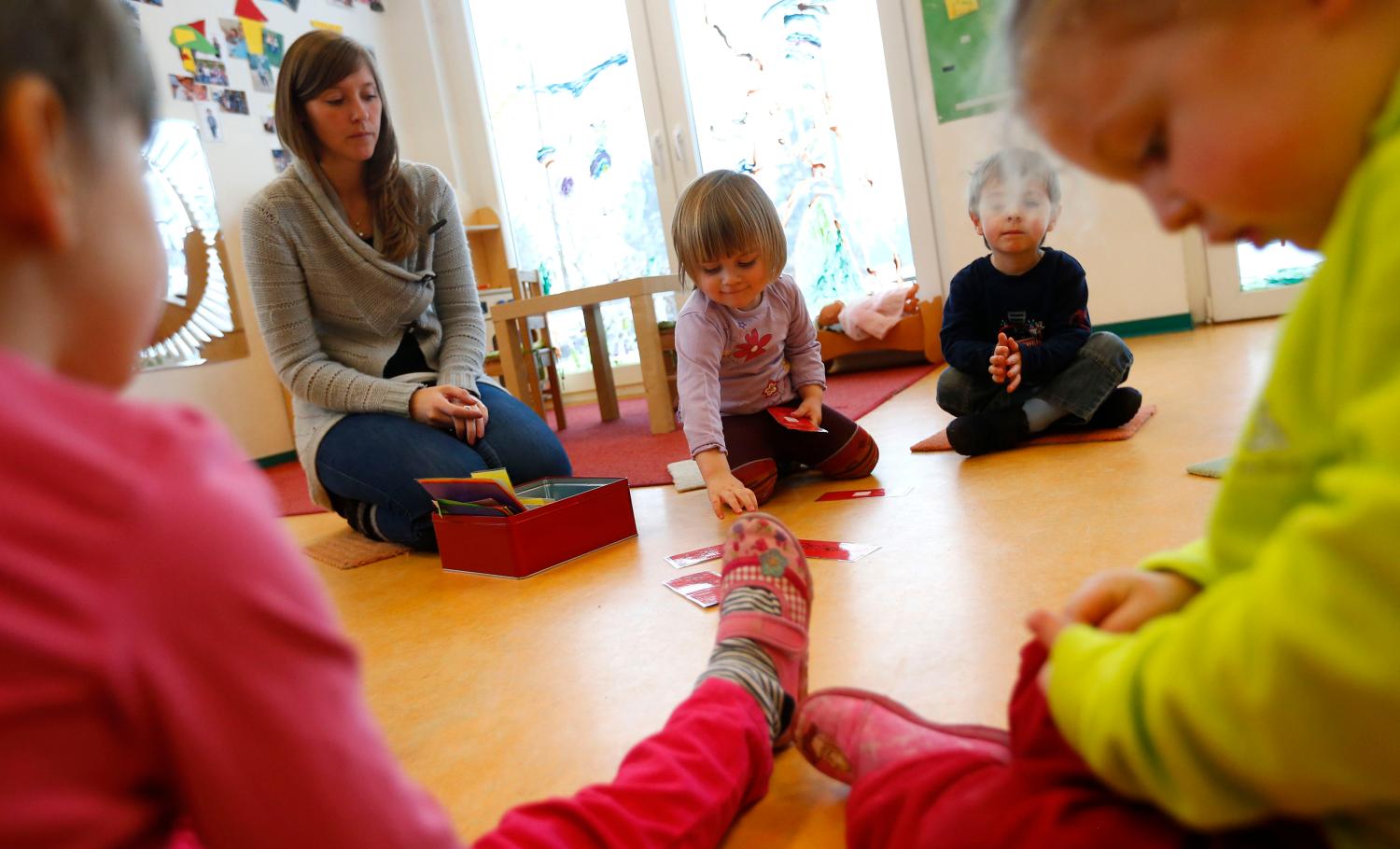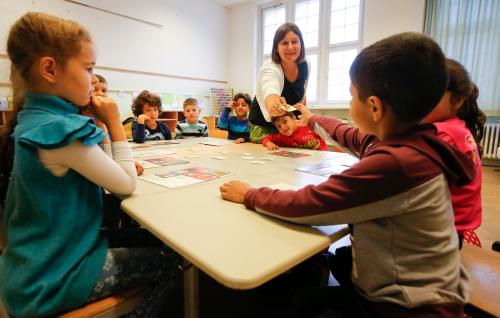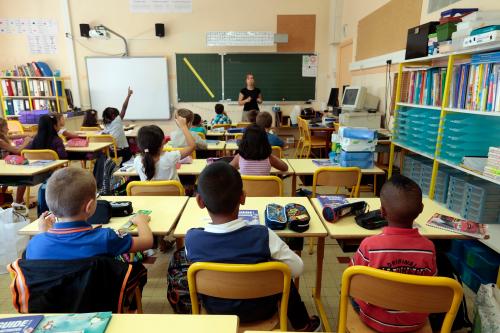Policymakers and leaders at multiple levels have been paying increased attention to community schools—schools that engage families and community organizations to provide well-rounded support to students. Recently, presidential candidate and former Vice President Joe Biden called for expanding community schools. New York City Mayor Bill de Blasio, another presidential candidate, has created the largest community school initiative in the country with over 200 sites. And Randi Weingarten, president of the powerful American Federation of Teachers, has been a vocal advocate. At the local level, grassroots organizers are calling for more community schools. Community schools seem poised to become an increasing presence in education politics—and policy—going forward.
Background on community schools
Community schools identify what students, families, and communities need to succeed and use community assets—partnerships with local organizations and agencies—to meet those needs. The Learning Policy Institute describes four common pillars of a community school: expanded and enriched learning time and opportunities; collaborative leadership and practices; active family and community engagement; and integrated student supports. In identifying a typology of school-community partnerships, my colleagues and I suggest that community schools are more than just wraparound services provided to individual students in need. Rather, community schools use strategic, results-focused partnerships to improve a wide range of outcomes.
Evidence of the potential and effectiveness of community schools is growing. While I am not aware of studies showing adverse impacts of community schools, critics argue that the focus of schools should remain on academics, and not the areas that are outside the traditional purview of schools. Some also claim that community schools are an overreach of the nanny state. On the other hand, supporters argue that providing sick kids immediate medical attention, offering enriching educational opportunities, and making meals available for children and families that are hungry doesn’t require research about effectiveness—they are moral obligations. They also argue that providing these resources support the needs of the whole child, better positioning them for academic success.
More research needs to be conducted to understand how and in which contexts community schools work, how we can identify their causal effects, and how the approach can be sustained after policymakers and school leaders move on to other priorities.
An active area of education reform
Interest in community schools has grown over the past 20 years, but does this education reform strategy have the staying power of other approaches like charter schools, turnaround schools, and vouchers? Each of these approaches has solidified its prominence through statewide policies.
In recent years, community schools advocates have secured victories at the national level, including sustained and increased funding for the Full-Service Community Schools Grant program and the inclusion of this program in the Every Student Succeeds Act (ESSA). Now, many community school leaders are focusing on state-level policy. As responsibility for education has once again moved to the states with ESSA, there are new opportunities for these local initiatives to advocate for state support to solidify the community schools approach as a large-scale, long-term education reform strategy.
The following examples illustrate considerable recent progress at the state level:
- On the final day of its 2019 legislative session, the New Mexico state legislature approved a bipartisan bill that created a statewide framework for community schools and authorized $2,000,000 for a competitive grant program. How did this happen? Building off strong local examples, a group of community leaders—including nonprofit organizations, after-school state advocacy groups, and families—formed a statewide coalition in 2018 to advocate for legislation that would raise the visibility of the growing community school efforts in the state. Their goal was to establish policy that codified the education reform approach and to secure public funding. This illustrates how the community school movement—built from local school site and district-led initiatives, and supported by national partners—is taking aim at securing its place as a viable education reform strategy through state support.
- Maryland, which has a strong community school initiative in Baltimore and a strong statewide after-school network, passed legislation that defines community schools in order to help guide local implementation. The bill also secured dedicated funding for community school coordinators for any school where at least 80% of students receive free or reduced-price meals—over 240 schools in the state.
- New York state has been a leader in funding for community schools, providing $200 million in its latest budget. New York has also recognized the importance of technical assistance for strong implementation of its policy. The state provides $1.2 million for three regional technical-assistance centers. This approach provides needed support to new district and school leaders and deepens the knowledge base about community schools across organizations that aren’t traditionally focused on this strategy.
- In Minnesota, Democratic Gov. Tim Walz proposed $8 million for full-service community schools over four years. His proposal made progress, gaining support from the Minnesota House, but did not make it out of a contentious budget compromise this session.
- In Florida, Republican Gov. Ron DeSantis signed legislation authorizing a “Center for Community Schools” at the University of Central Florida along with a grant program, subject to available funds. The center supports implementation and funds community school sites.
Community schools are beginning to find support in purple and conservative-leaning states as well, with legislation introduced this session in Arizona, Georgia, Arkansas, and Mississippi. In Texas, the House passed a bipartisan bill to allow school sites to use the strategy as a campus turnaround plan. While not becoming law, these steps help set the stage for future legislative sessions. And sometimes state action doesn’t require new legislation. For example, in its state ESSA plan, Pennsylvania encourages local education agencies to use existing state and federal funds to create community schools and offers state-supported technical assistance.
Challenges remain
These examples show that community schools are on the move at the state level. The ground-up strategy is receiving bipartisan, state-level policy support across red and blue states that could help solidify it for years to come. However, challenges to this trajectory remain.
First, many of these policies are grant programs, subject to funding swings or eliminations year-to-year. Local leaders are organizing to build advocacy mechanisms that will help maintain and grow supportive policies.
Second, there are many competing but interdependent strategies that, while worthwhile, all require funding and policy support. Community schools have an opportunity to serve as a vehicle to lift up each of these strategies by integrating them into a more comprehensive site-level framework.
Third, defining a community school has always been a challenge. States need to be clear about what a community school should look like in state policies in order to fully fund necessary components (e.g., a full-time coordinator), while providing maximum flexibility in programs and services for local needs, assets, and decision-making. The field-developed community school standards provide a common language around the necessary implementation components and recommended programmatic elements upon which to build.
Finally, while the evidence is growing, community schools will need to continuously improve their practice, learn from mistakes, celebrate successes, and keep a focus on results-based partnerships.
The increase in state-level community school action provides an opportunity to make community schools the norm, and a necessary component of effective school reform.
The Brookings Institution is committed to quality, independence, and impact.
We are supported by a diverse array of funders. In line with our values and policies, each Brookings publication represents the sole views of its author(s).








